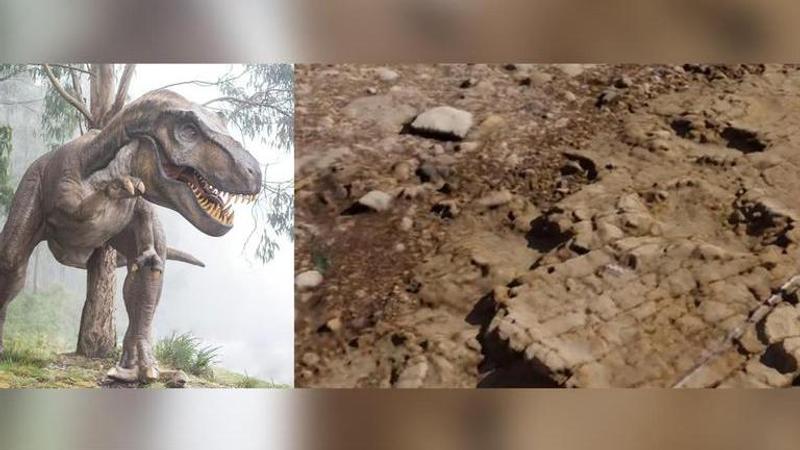Published 19:27 IST, December 31st 2021
Dinosaur tracks discovered on Welsh beach date back to 200 million years ago: Report
A recent study by a team of researchers from Liverpool John Moores University suggests that long-necked dinosaurs lived in Southern Wales 200 million years ago.

A recent study conducted by a team of researchers from the Liverpool John Moores University suggests that long-necked dinosaurs used to live in Southern Wales. The researchers came to the conclusion after analysing 200-million-year-old footprints which were discovered on a beach near Penarth in 2020.
The researchers believe that the site may have been a gathering place for sauropodomorphs - a long-necked, herbivorous dinosaur - based on the quantity and variety of footprints, Daily Mail reported. The researchers produced 3D reconstructions of the trace fossils, which date back to the Late Triassic period around 237–201.3 million years ago so that they could be examined in greater detail. Sauropodomorphs existed between 231.4 and 66 million years ago.
'Fascinating addition to the understanding of Triassic life in the UK'
Natural History Museum Professor Paul Barrett was quoted by Daily Mail as saying that the number of footprints suggests that the location may have been a gathering spot for the dinosaurs. He also stated that these kinds of tracks are not very widespread around the world, which makes it a fascinating addition to the understanding of Triassic life in the UK. He further said that the record of Triassic dinosaurs in this country is fairly limited, and whatever they can unearth from the period tells what was going on at the time. Talking about trace fossils, he said that trace fossils are those that capture features of an animal's behaviour or anatomy that the skeleton does not.
Peter Falkingham of Liverpool John Moores University said that the tracks originally appeared to be a bit confusing, and it took them quite a long time to know if they were actually tracks or just holes in the ground, Daily Mail reported. He continued by saying that when they examined it closely, it appeared that the impressions overlapped in places, as would be expected if numerous animals were trampling the ground and they also looked to occur in semi-regular spacing.
Tracks an example of Eosauropus
According to a report by ITV, the team believes that the tracks are an example of Eosauropus, which is not a name of a dinosaur but a sort of track presumed to have been made by a very early sauropod, or a close relative of a sauropod. The study's complete findings were published in the journal Geological Magazine.
(Image: @peterfalkingham/Twitter/Unsplash)
Updated 19:28 IST, December 31st 2021




